Background:
Because finding little difference is not enough reason to stop searching.

In my ongoing quest to quantify the “ram air effect” that several intakes purport to take advantage of, I worked on making a bracket to hold an “Averaging Flow Sensor” probe that is designed to allow measurement of the total and static pressure in an airstream.

The two pressures are sampled with a differential pressure sensor to determine the dynamic pressure of the airflow, the magnitude of the “ram air”.

The probe is being installed behind the grill to sample the airflow that would in theory be redirected with the use of an inlet scoop.

The differential sensor is attached to the AFS probe.
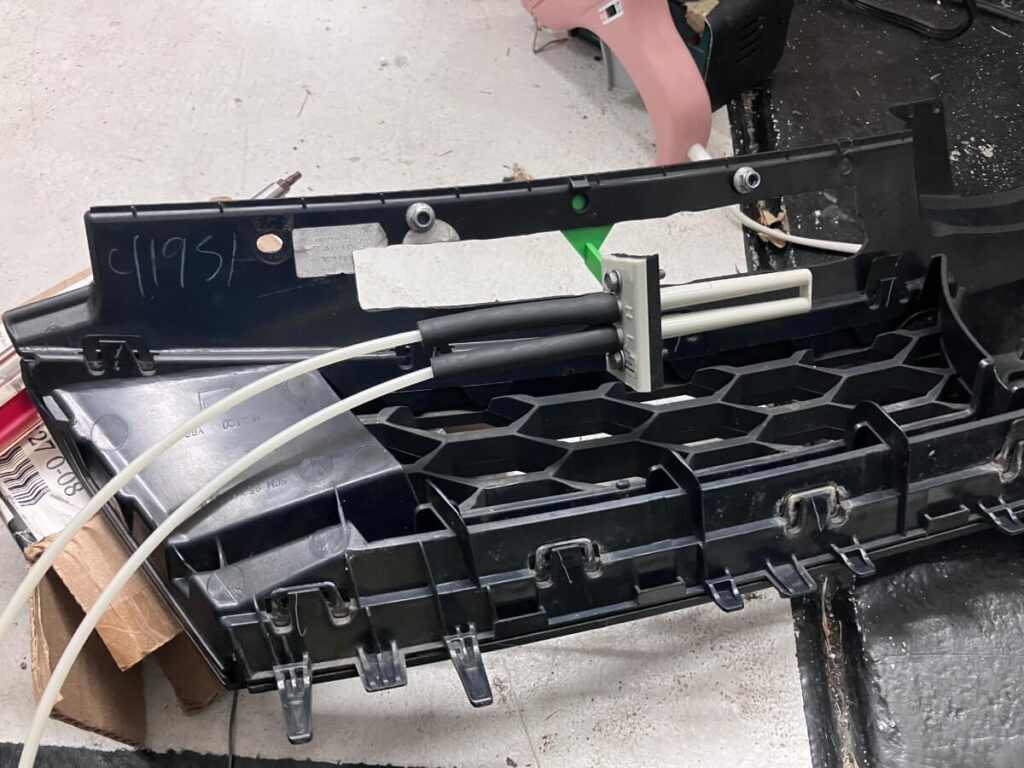
The grill is reinstalled on the GTI.

The probe is in position to pick up “ram air”.
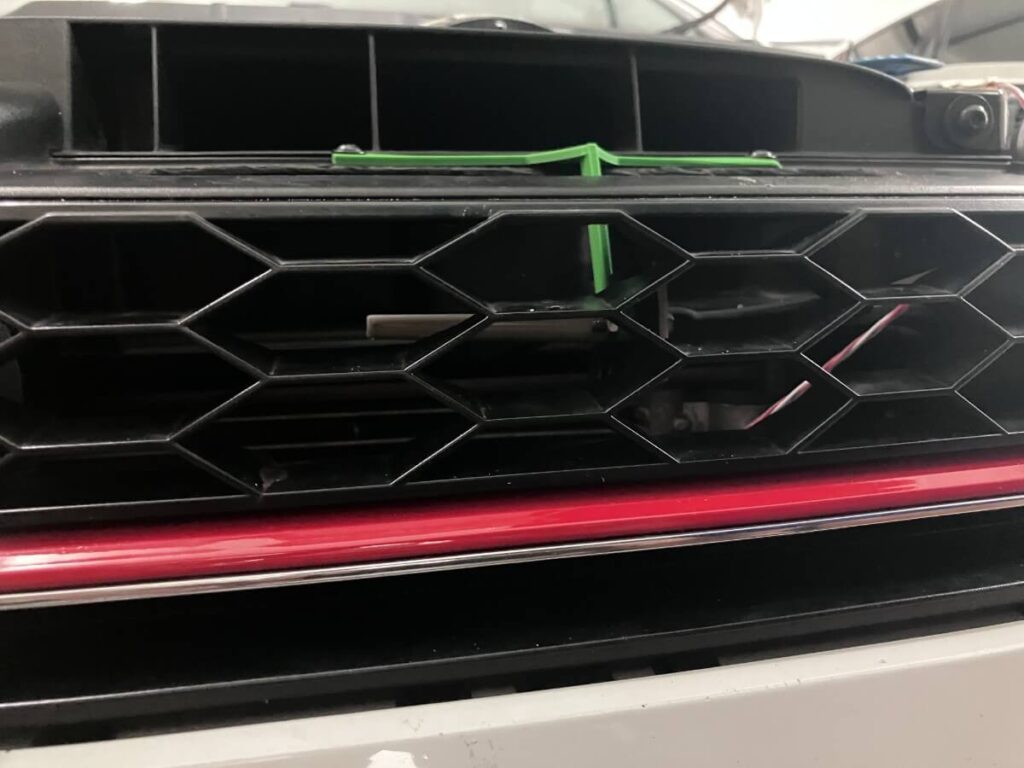
Wiring up the sensor to a data logger.

Test Drive:
With the measurement equipment in place, I set out on a drive that included short stints at interstate speeds.

The first data collection was successful showing an increase in the dynamic pressure with vehicle speeds.
Curious about how much pressure this is I performed a comparison test using a drinking straw that is about the diameter of what would be found at a fast-food restaurant.

One end of the straw is placed near the total pressure probe opening and the other end I blew into.
The first breath through the straw was a steady flow increasing moderately at the end, and the second was a steady blow followed by a forceful puff.
The pressure recorded during this puff test is overlayed on the street data chart, shown by the green lines.
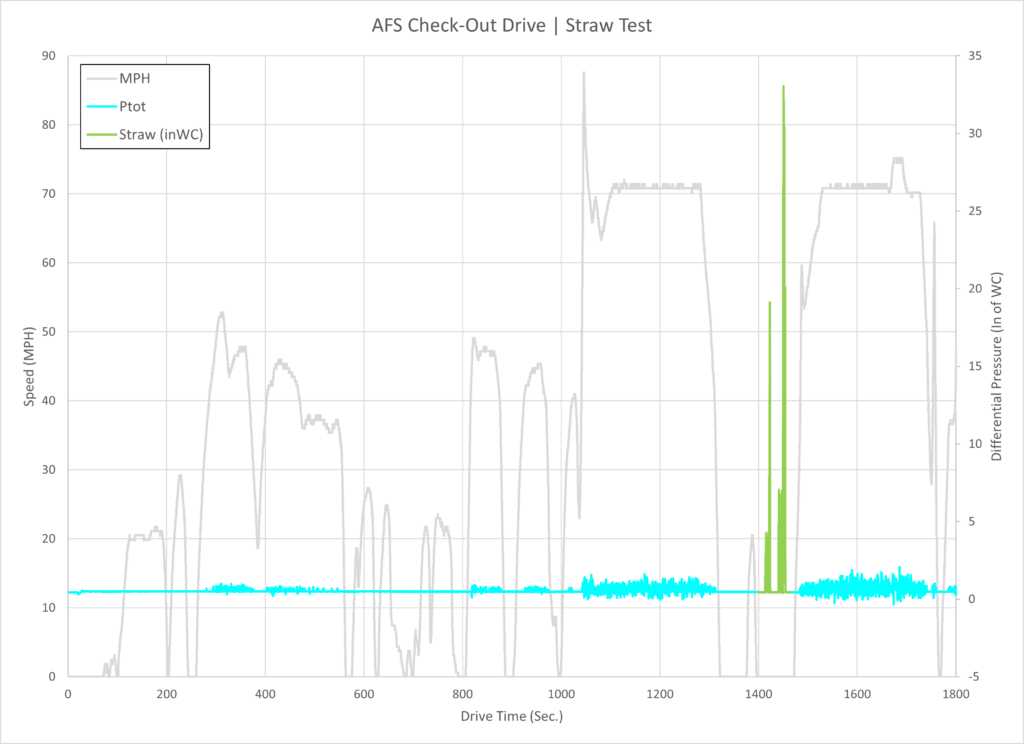
This was a disappointing outcome. 70 mph “ram air” was a ripple compared to blowing through a straw.
Next, I disconnected the Static Port so that the pressure sensor was only measuring the Total Pressure at the forward-facing probe opening.
The total pressure approaches 1.5″ of WC at 40 MPH versus 70 MPH when measuring differential pressure.

Another test with this configuration was made where the vehicle speed briefly reached 80+ mph.
The brief bursts of speed correspond with increases in the total pressure measurement.
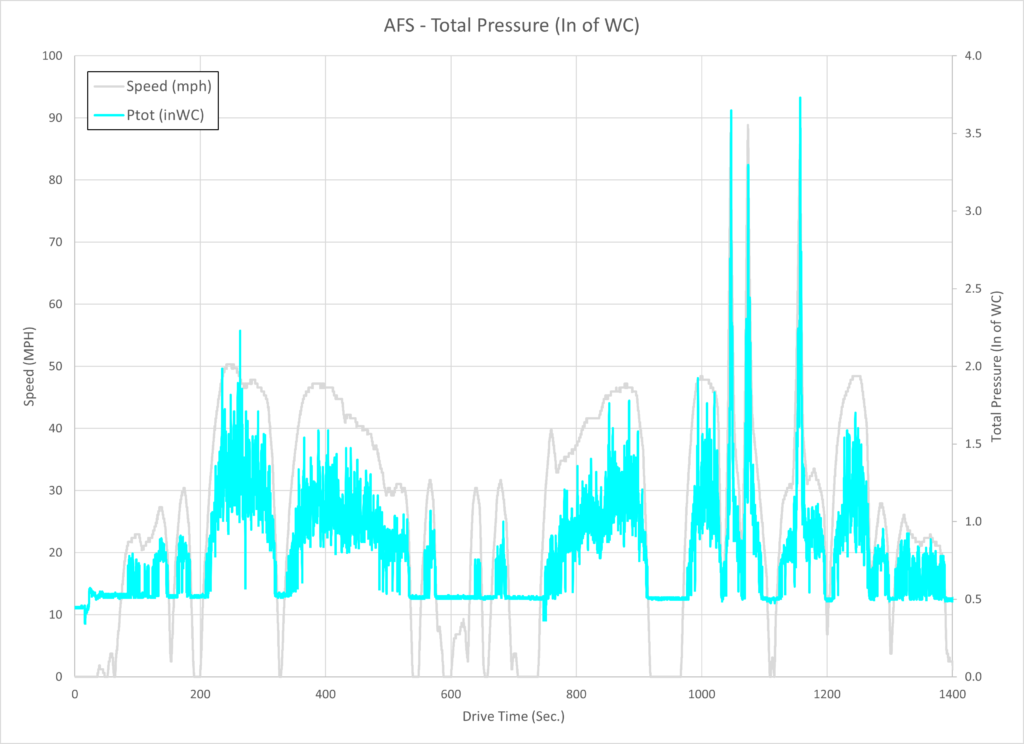
Shown below is a close-up of these speed bursts.
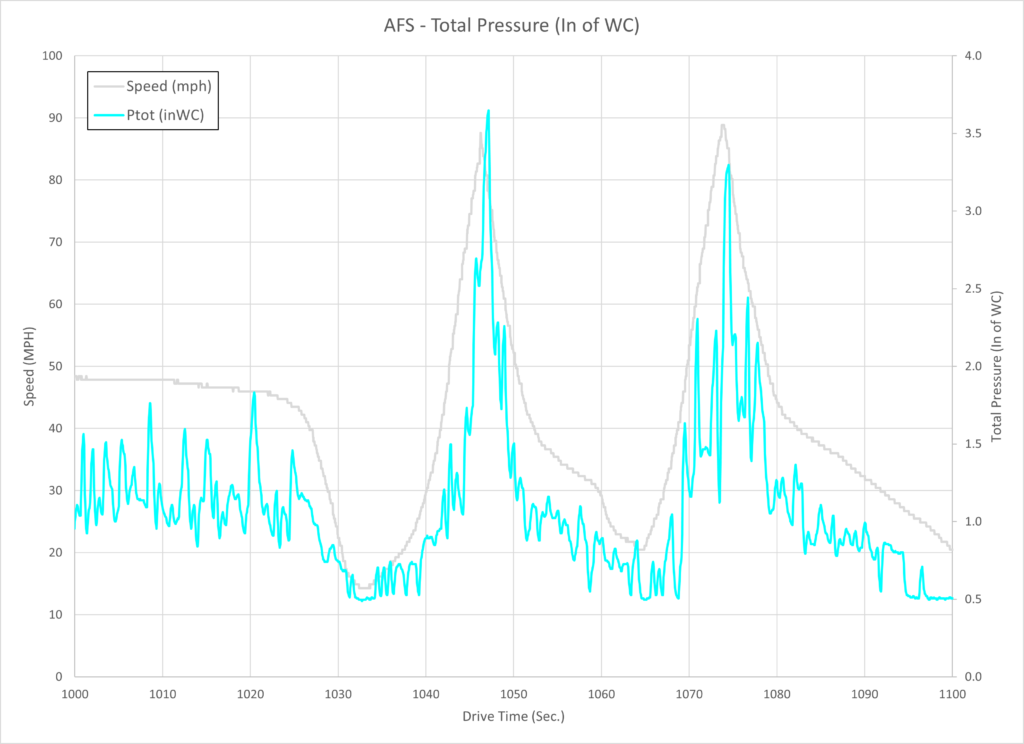
The total pressure of 3.5″ inches of H2O is better than nothing, but as shown by the comparison with blowing through a straw onto the probe, it’s a relatively small effect at these speeds.

This was a super interesting read!
I like how U put it, it’s better than nothing. In your opinion though, is it even worth drilling into that front duct thingy and also adding the cut outs ( https://www.ecstuning.com/b-ecs-parts/mk7-mk75-gti-golf-r-luft-technik-air-inlet-scoop-kit/004373la~dk/?pdk=Bg ) that allegedly help open intake filters stay cooler when in motion?
I doubt that making the cutout to the top of the grill makes a difference for most setups. My guess is that the pressure increase source is the air outside the grill being at a higher pressure, not air moving through the grill then raising the pressure as it slows. This would mean there isn’t any significant airflow to “direct” into the intake, it’s just a whole region of slightly higher pressure at the front of the car that in turn raises pressure behind the grill, so any nook and cranny in the grill is going to serve to equalize the pressure.
That makes sense. Thanks for the explanation. On Veloster n’s I’ve seen this thing they put on. It’s a scoop of sorts. No idea what it’s called but it seems to pick up air from the middle area of their front opening. And due to how it’s shaped, it leads the air to the filter area